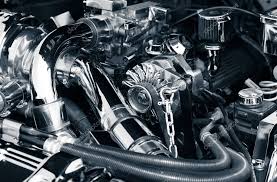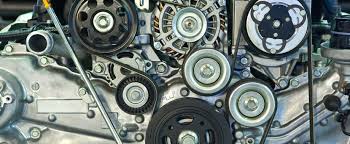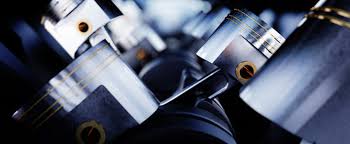Car Dealers – Make Your Dealer Decision Carefully
Buying a new car can be a scary prospect. There is a long list of decisions with seemingly no practical conclusion. Well, the choice of that brand or model of car that you might be looking hard enough, you can be sure to maintain an easy decision, where to buy your car either from dealer or a person.
There are three different types of car dealers: official, franchise and independent. Each type of retailer has its advantages and disadvantages. To get a true picture of the offers available to you, be sure to examine the three types of distributors in your area – you might be surprised at the deals you can find.
Official car dealers may be the most expensive option for buying a new or used car, and is associated with a particular manufacturer. However, you can be sure that the car you buy is guaranteed to be of high standard, and as a specialized manufacturer, the advice you receive will be complete. In addition, the dealer will offer a wide range of monitoring and support for walking time buyers secure. Depending on the type of car you want to buy, be sure to consider these options.
Buying used car from franchise or chain dealers can be a little cheaper than buying directly from a main official dealer. While some car dealers are associated with different manufacturers, the variety of vehicles available is often wider, while the state of the quality of the cars is so varied. Many retailers are offering a wide range of services such as security and services, so be sure to compare the deals on offer here with those available at dealerships.
Buying car from independent dealers is almost certainly the most economical solution for you, but this lower price does come at a cost – Office Equipment range, such as guarantees and service can be much more limited than in other types of car dealers. The variety of cars available can be extended, with merchants offering luxury 4×4 cars and budget level in the same court. However, while some cars can be seen as a business out, make sure you know exactly what you are buying, because there is so little help at hand if something goes wrong. After this, the traders themselves cannot be experts on any make of car

Secrets That Car Dealers Don’t Want Consumers To Know
Purchasing a new or used car generally involves a lot of stress, money, and time. Over the years, car dealers have gained a reputation for trying to put pressure on customers and lure them with special offers, discounts, and other benefits. While many car dealers have earned this bad reputation, some actually want to give customers a fair and good experience.
However, the fact remains that all car dealers are out to make a profit. As a customer, you need to educate yourself and be confident when making a deal. Read on to learn about the secrets that car dealers don’t want consumers to know.
Be Cautious Of Car Dealers Who Let You “Talk it Over” In Their Presence
If you happen to get trapped in the car dealer’s office bargaining over the numbers, there is a huge possibility that he may pretend to receive a call and leave the discussion to you and your partner. This is an old trick that many salesmen may use to eavesdrop on your conversation. Also, it lets them know what your bottom line is. If this situation occurs, sending text messages or whispers can be a great way to stop the car dealer from listening to your conversation.
Do Not Fall For The Extended Warranties Offered By The Dealer
When purchasing a vehicle, the car dealer may try to push every single option on you. This sales pitch might also incorporate an extended warranty that you can get from somewhere else at a lower price. Remember, a car dealer earns plenty of money on these services, so don’t buy it.
Also, it’s vital to keep in mind that the finance manager acts as a salesperson, so he or she might try to get more money out of you in every way possible before you leave.
Carry Out Research Ahead of Time
For many years, car dealers had all the power when it came to dealerships and sales, but now this has entirely changed. Most car buyers today research on the internet before buying a car. With the right information and the availability of several helpful websites and True Market Value, you can easily check out the reviews of a particular vehicle, available rebates, and see what car suits your budget.
By carrying out research ahead of time, you will know what car you want. It also saves you the time of being led around the lot to look at vehicles you either have no interest in, or you cannot afford.

Never Say Anything About The Down Payment Up Front
The car dealer might ask you beforehand: how much money are you ready to put down? This question may seem rational, but what you are actually doing is giving up the bargaining chip far too soon.
There is an industry story about an old man who had $10,000 to give as a down payment for a truck. As the man discussed the payment way too early, this allowed the dealer to raise the price of the truck to counterbalance the down payment. Therefore, it is extremely crucial to know the out-the-door cost of the car before you say anything about your down payment.
Do Not Tell the Dealer You Are Paying in Cash
You might think that paying in cash is a good move, not always! For many car dealers, the actual profit is in getting the fine print of the financing.
Therefore, revealing to the dealer right away that you are paying in cash, will leave you in no position to bargain. So always negotiate the price first and then tell the dealer if you are paying cash, leasing, or financing.

Buying a New Car From a Dealer: Dos and Don’ts
Purchasing a new car is one of life’s more exciting experiences, but it can be overwhelming and expensive if you don’t follow some simple car-buying rules. Fortunately, there are loads of resources available to help you find the perfect car at an affordable price.
Remember, at its core, buying an automobile is a business transaction, and it is one of the last purchasing experiences that still requires consumers to haggle. The more emotion you keep out of it, the better the final result. Knowing the buying process and how to navigate it is your best path to a smooth buying experience. As in any negotiation, both sides will have some give and take, so knowing where to be firm and where to be flexible is essential.
Before you head to the dealer, explore the following list of dos and don’ts for buying a new car at a dealership.
Do: Research Your Purchase
Information is a buyer’s best friend. Fortunately, websites like U.S. News Best Cars give consumers more data than they’ve ever had about the features and prices of every vehicle and option available. Not only can you find pricing and feature data, but you can also explore safety and reliability ratings.
Our new car rankings, for example, allow consumers to see how new cars compare to others in the class based on a variety of factors, ranging from performance to reliability.
The internet is also an excellent source of information about the price that the dealer paid for the car, what other customers are paying for their vehicles, and the value of any trade-in that you have.
Long before they step foot in a car dealership, smart buyers know the vehicle that they want and the price they should pay.
Don’t: Go to a Dealership Without Already Having a Financing Offer
Today’s car dealers make much of their revenue in their financing offices. They get a cut of any auto loan that they get buyers to accept. The offers they present may be a great deal, but they aren’t always the best ones for customers – they’re the ones that make the dealership the most money.
Before you start visiting dealerships, get a pre-approved financing offer from your bank or credit union. That way, the dealer has to offer a better deal if they want to earn your business. Without an offer in place, the dealership will have no incentive to work hard to earn your new car financing business.
Do: Talk to Your Insurance Agent Before You Buy
It costs different amounts to insure different cars, so it can pay to talk to an insurance agent before any final decision is made. After you have purchased a new car is the wrong time to find out that it costs much more to insure than other vehicles.
Insurance companies offer many of the same products that you’ll be offered in the dealer’s finance office, such as GAP insurance and vehicle service contracts. Often, they’ll be much more affordable through your insurance company’s products, but you should always compare the specifics of each product to ensure its value.
Don’t: Start the Conversation by Saying You’ll Pay Cash
Paying cash for a car is a great thing to do. However, telling the dealer that you plan to is a bad idea. Since much of the dealer’s revenue is made through financing, they’ll have less incentive to make you a deal if they know they won’t make any money on your car loan.
Instead, negotiate the purchase price of the vehicle first, and tell them that you haven’t decided about financing. Besides, if they find you an awesome zero percent financing deal, it might make sense to save your cash.
Do: Know Your Budget and Credit Score
It is critical to know how much you can afford every month, and how much you can pay up front. Without knowing those two numbers, you’re going into the purchase blind, and you might end up with much more car than you can afford.
Buyers need to figure more than just the price of the car into their buying equation. Insurance, fuel, and maintenance costs can add up, so be sure to check those factors out as part of your new car research process.
Knowing your credit score and what’s in your credit report can help you to get the best financing deal available. New car financing and cash back deals are typically only offered to buyers with top-tier credit, so take some time to correct any errors on your credit report and mend any credit blemishes if you want to get the best deal possible.
Don’t: Only Look at the Payment
Many buyers focus only on the monthly payment, but that’s a bad way to buy a new car. Instead, look at the total cost, including interest payments and other fees over the life of the loan. It’s simply not worth saving that $20 per month if it means making payments for another year.
Focusing on the monthly payment can also entice buyers into add-ons that they don’t need or that are overpriced. The car salesman might tell you that paint protectant is only an extra $8 per month, but over the life of a six-year loan, you’ll pay $576, plus interest.
The way to find out the total cost of a car is to multiply the monthly payment by the number of months in the loan, and then add the amount of your down payment, plus any taxes and fees.
Do: Break Down the Transaction Into Components
Confusion is your worst enemy and the dealer’s best pal. By merging the cost of the car, financing, and the value of your trade-in into one, the salesperson can hide the fact that they are overcharging you for the vehicle, undervaluing your trade-in, or charging more than you should be paying for financing.
Instead, insist on treating the car purchase, the financing, and your trade-in as entirely separate points of negotiation. They’ll likely object to your strategy, but let them know that you are prepared to sell your trade-in yourself.
Don’t: Just Shop at One Dealer
Like any purchase, you should comparison shop before you lay down your hard-earned cash. Just letting a dealer know that they have competition can make them work a little harder to earn your business. Fortunately, you don’t have to drive around, just use their website contacts to get offers.
You should also use geography to your advantage by looking at dealers where sales of the car you are considering might be weaker than others.


